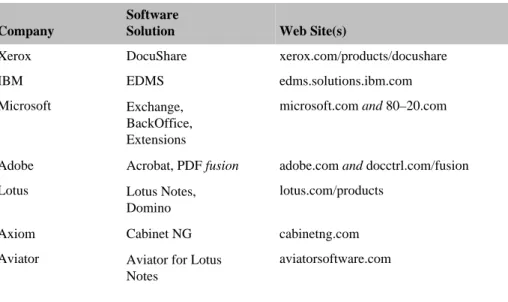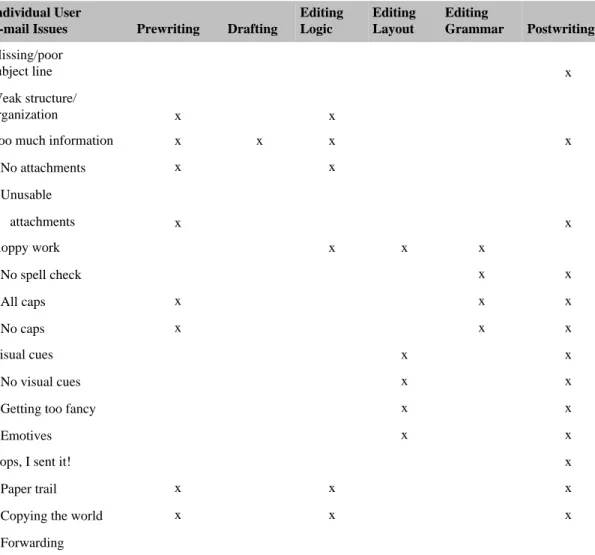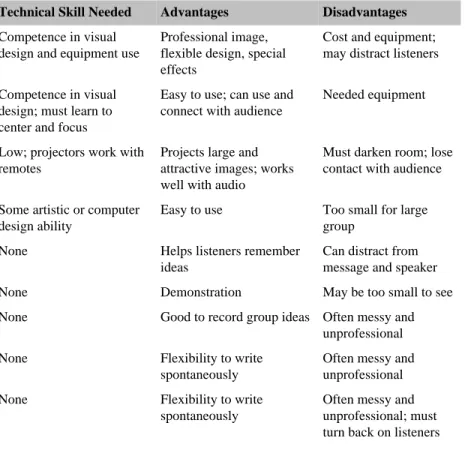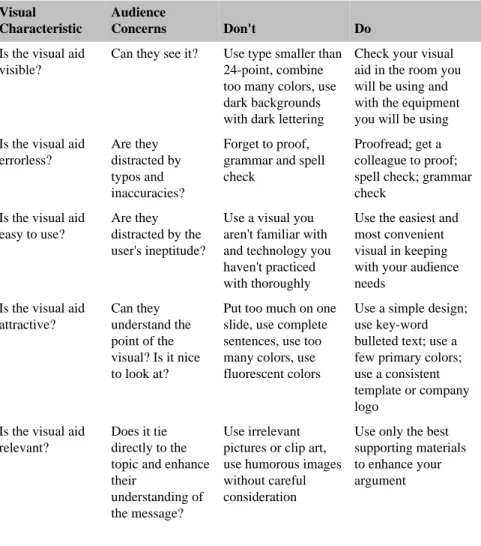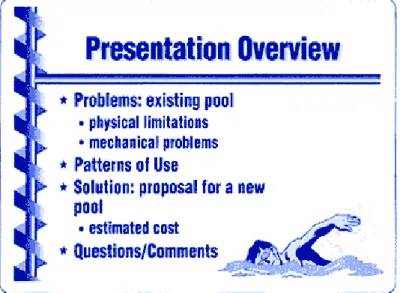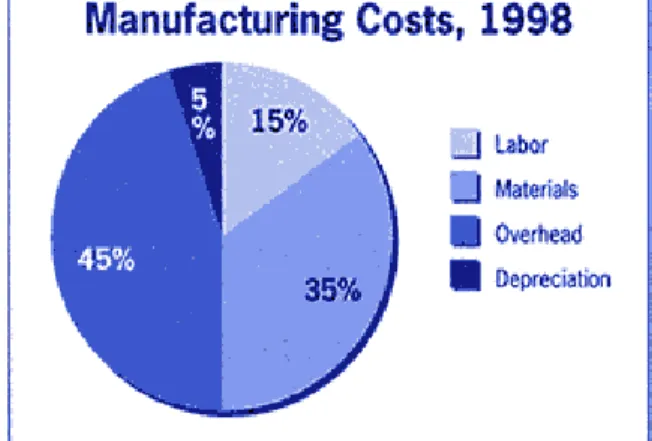This publication is intended to provide accurate and reliable information regarding the subject matter. Ron Hein is president of Ron Hein & Associates, Inc., a corporation that provides writing, editing and consulting services to individuals and clients such as Xerox and Eastman Kodak.
INTRODUCTION
In addition to business writing and business presentations, we include two additional and important perspectives. And we guarantee that improved business writing and business presentation skills will save you time and money.
STELLAR PERFORMER
DEPARTMENT OF MATHEMATICAL SCIENCE, UNIVERSITY OF DELAWARE
PART 1—
COMMUNICATION STRATEGY
It is clear that profound changes are taking place in the way businesses are doing business and communicating. Changes are occurring in what is communicated inside and outside organizations, why it is communicated, and who is doing the communicating.
Chapter 1—
Strategic Business Communication
Communication problems cross all levels of a company and important decisions have to be made at different levels. As a result, individuals and teams are often unable to identify strengths, weaknesses or barriers, and they cannot get the resources they need to improve business communication and increase efficiency and effectiveness.
Chapter 2—
Document Management in an Electronic Age
Another valuable byproduct of document management systems is the ability to implement document templates that ensure consistency and. One of the most important requirements for effective document management is excellent technical (computer hardware, software and network) support.
PART 2—
Using a document management system and establishing a consistent document lifecycle policy can increase productivity and reduce liability issues. Companies must establish clear and consistent document management systems involving individuals at all levels of the organization to ensure they are effectively implemented and maintained.
BUSINESS WRITING AND EDITING
Our goals in this cluster of chapters are to make connections to the writing and editing process, to provide useful tips for avoiding common problems, and to help you create high-quality documents that require significantly less effort and time to prepare and use. If you get used to using a systematic writing and editing process, we guarantee that you will write more persuasively and efficiently – and save time and money.
Chapter 3—
Using Writing and Editing Processes
You need to take your reader's perspective and evaluate how you would react if you received this document. Establishing your layout and design criteria before you begin will save you and your team a lot of time and revisions.
Chapter 4—
The sequential process of writing and editing in multiple steps is effective because it helps writers break down what seems like an overwhelming task into a series of manageable steps.
Developing the Logic and Structure of Documents
One of the most effective ways to help your readers understand and follow the logic and structure of your materials is to help them visualize your ideas. It's easy to improve the logic and structure of a document when you get the input of your readers.
Chapter 5—
Document Layout and Design
Making Your Logic Visually Clear
Using good layout and design concepts makes it easy for your readers to find what they need and what you want to share. Common layout and design tools can help you enhance documents to get the results you need.
Chapter 6—
Making Your E-mail Go Further and Do More
For example, if you want to summarize a page of text using a table or graphic, the recipient's email or other software will open it. Many times the visual cues (bold, margin changes, italics, color, etc.) end up as embedded gibberish in the recipient's document.
Chapter 7—
The use of email to communicate effectively, reduce meetings, and save time and money locally and internationally cannot be ignored. In the long run, you will save time and money - and achieve the desired results.
Memos
To help you visualize how to improve memos (and email), we provide sample memos in Appendices C and D that demonstrate common problems and effective solutions. Additionally, using the writing and editing process can ensure that notes include appropriate organizational plans and visual cues that make them easier to create and read.
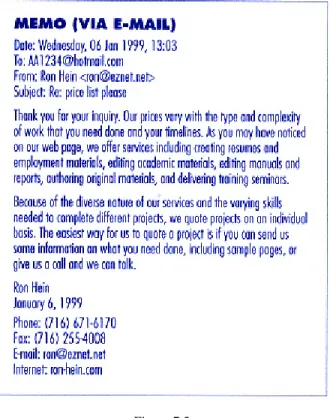
Chapter 8—
Figures 7.3 to 7.4 illustrate how memos sent as e-mail can be quickly and easily enhanced by adding simple visual cues such as lists, bullet points, and subheadings to indicate the next action to take. For this reason, it is important that we use both document management systems (Chapter 2) and writing and editing-.
Business Letters
To create a well-organized business letter, it is especially helpful to apply the ideas suggested in Chapter 4 on logic, structure, and organizational plans. It is sometimes recommended that you put good news in your first sentence and if you have bad news, buffer it by using a neutral first sentence or paragraph.
Chapter 9—
Unless you're dealing with a very conservative reader (find this out during your prep step), use visual cues (subheadings, displayed or bulleted lists, indented margins, subject lines, etc.) to make your letters easier to read. In a business letter, it is important to verify that you have included appropriate content, used an appropriate organizational pattern, avoided errors in tone and phrasing, spelled names and titles correctly, and used style, layout, and design features that make your letters easy. read.
Reports and Executive Summaries
If your readers cannot easily understand what you have written, your recommendations will have low credibility. Executive summaries save you and your readers time and money by focusing your readers' attention and making your arguments more persuasive in the long run.
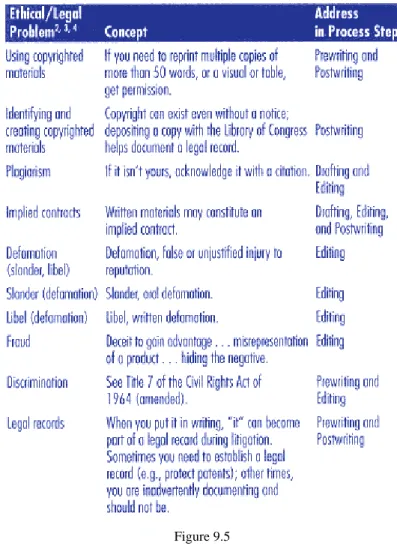
Chapter 10—
The content of an executive summary should be developed to meet the requirements of those who read the report so that they can best understand the issues and make effective decisions. It will help you save time and effort, and it will help you create more effective reports.
Proposals and Requests for Proposals
Writing proposals and RFPs should be done thoughtfully because the language and specifications set forth (or not set forth) in an RFP or an RFB are the first part of a contract with the selected offeror. As with most business documents, there is no single correct answer to what should be included in an RFP or proposal—frustrating managers looking for cookie-cutter solutions.
PART 3—
BUSINESS PRESENTATIONS
In Chapter 2, we described a writing and editing process that will help you write more efficiently and effectively. Recognizing the parallels between the writing, editing, and presentation processes can be very helpful when you need to create a document and then present it.
Chapter 11—
Defining Your Purpose
34;I intend to demonstrate why our no-load mutual fund is the best place for your investment dollars.” 34;This afternoon we will describe three key ways in which the new software can streamline our invoicing processes.
Chapter 12—
34;After this presentation, a majority of managers will vote in favor of the proposal to add staff to the marketing department." 34;This report will clarify the goals of the assessment team and as a result each member will be able to fully participate in the next planning session."
Analyzing Your Audience
One of the most important factors that will guide a speaker or writer is the level of expertise of the audience. You need to know your audience's knowledge of the topic so you know how much jargon you can use.
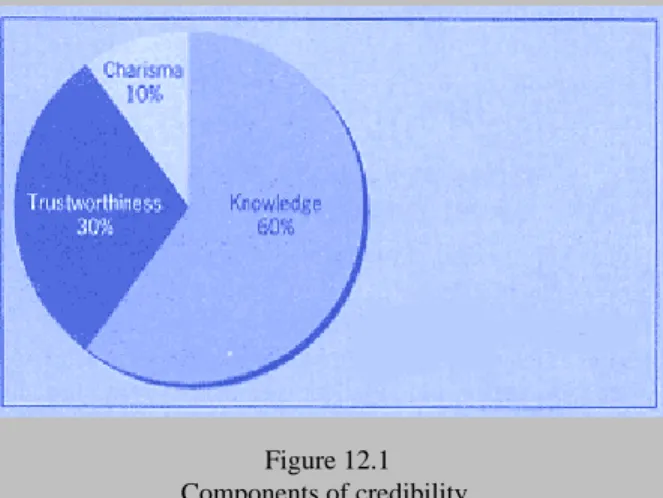
Chapter 13—
While my situation may sound unique to many, the principles of audience engagement work in virtually any type of business presentation. Previously, he was a partner for Strategic Visions Consulting Groups and director of Executive Education Programs for the University of Southern California's Graduate School of Business Administration.
Gathering Supporting Materials
The use of examples is an excellent technique to demonstrate the application of your presentation material to your audience. Although you may not generally think about supporting material when planning your presentations, making this a routine part of your preparation will increase your credibility with your audience and your confidence in your material.
Chapter 14—
We recently saw a creative use of support materials by the chairman of the Parent Athletic Advisory Committee who went before the local Board of Education to discuss the need for a new pool for the district. Once you have the supporting material you need for your presentation, you're ready to start organizing your main ideas.
Organizing Your Ideas
When you are confident about the structure and organization of your presentation, you will also be able to get your message - and your credibility - across. You can often achieve humor by creating it from your own experiences and observations of the world.
Chapter 15—
Adapted material or jokes can be adapted for different audiences by changing the joke's "link" (object, character, or setting). Judythe lsserlis is chair of the Department of Speech Communication Studies at lona College in New Rochelle. , New York.
Planning Visual Support
What you are trying to show on the visual should be immediately clear to your audience. While you may have the world's cutest kitten, Muffin's photo doesn't belong in your listing—unless maybe you work for Purina.
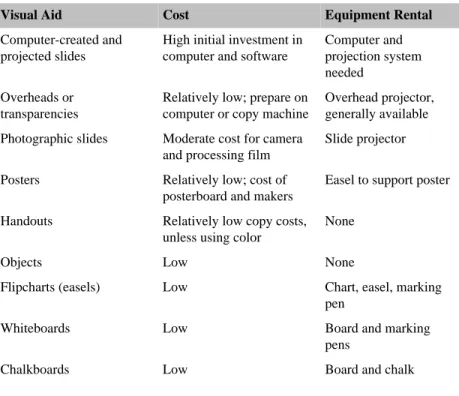
Chapter 16—
Better and brighter resolution projectors are coming out all the time, so the quality of the images will continue to improve. Digital cameras are falling in price and are being designed to be more versatile, making it easier to include images in your presentation slides.
Practicing Your Delivery
Aim for a conversational style as if you were talking to your audience in a one-on-one setting. If you are not genuinely interested in getting your message across, you are doomed to fail.
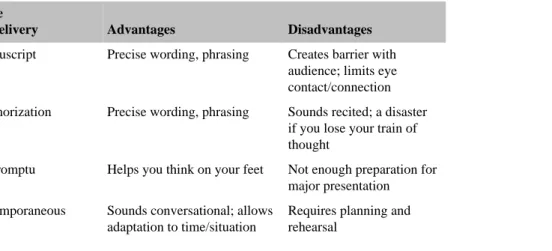
Chapter 17—
Handling Questions and Answers
When you are asked a question, make direct eye contact with the questioner and focus on the key words in the question. When you are the presenter, you are in charge, both during the presentation and the Q&A session.
Chapter 18—
To a novice speaker, a question-and-answer session can seem like an intimidating situation, akin to a firing squad or a grand jury inquisition. The question and answer session is a positive opportunity for the speaker to present the points made in the presentation and clarify any areas of ambiguity.
Handling Speech Anxiety
We believe that speech anxiety is real and that there are five excellent techniques to control or reduce it: knowing your material; practice, practice, practice; to know how you react; use of visual aids; and reconceptualize the situation. However, if you feel that your own speech anxiety is worse and that you need help beyond the tips provided here, we encourage you to seek out an anxiety reduction program.
Chapter 19—
Evaluating Your Presentation
In this step, evaluate the verbal and nonverbal communication that contributed to the success or failure of your presentation. Page 185 We do not recommend that you become overly specific about every aspect of your presentation.
PART 4—
WRITING AND PRESENTING AS A TEAM
Chapter 20—
Writing As a Team
In addition to Gantt or PERT charts, you can choose from a number of computerized project management software products (eg Microsoft Project). Managing team projects is becoming more sophisticated due to the number of new options in word processing and project management software packages.
Chapter 21—
Presenting As a Team
Use the introduction to preview the content of the presentation and how the team will present it. All panel members must be available for a question and answer session at the end of the presentation.
APPENDIX A—
THE SELF-DIAGNOSTIC GRAMMAR TEST
According to Lupe, less than 14 percent of employees took their entire sick leave; they preferred to roll it over and add it to their vacation time. According to Lupe, less than 14 percent of employees took their entire sick leave.
APPENDIX B—
GUIDELINES FOR SPECIAL-OCCASION PRESENTATIONS
Don't toast after enjoying the open bar with great enthusiasm. Again, you should think about the person or couple receiving the toast and the reason for the occasion.
APPENDIX C—
If you have accepted the invitation to give a eulogy, you should spend much of your preparation time reflecting on the deceased and on the words that would bring the most comfort to your audience. Consider the special characteristics of the people involved and consider the audience and what they want to hear.
SAMPLE E-MAIL DOCUMENTS
Don't deliver a toast with private jokes and references that only a few people in the audience can understand. You should consider it an honor to be asked to give a toast, and you should put as much thought and preparation into this speech as you would any other presentation.
APPENDIX D—
SAMPLE BUSINESS LETTERS
APPENDIX E—
PROPOSALS AND REQUESTS FOR PROPOSALS
APPENDIX F—
SAMPLE REPORT
The potential profit for the project is summarized by the data in Table 1 (Revenues) and Table 2 (Expenses, Wages). Revenue—The project's revenue potential is defined by a negotiated contract summarized in (Table 1: Project B-1999-07 Revenue Projection).
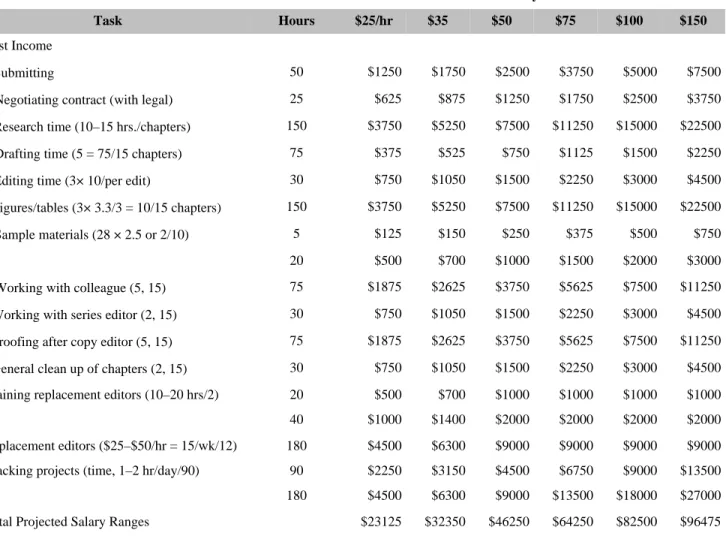
NOTES
34;Writing a Business Letter." In Harty, Kevin J., editor, Strategies for Business and Technical Writing, Third Edition. 34;Ten Report Writing Pitfalls: How to Avoid Them." In Harty, Kevin J., editor, Strategies for Business and Technical Writing, Third Edition.
BIBLIOGRAPHY
34;Language in change: academics' and managers' perceptions of usage errors." The Journal of Business Communication, spring p. 34;Using Graphics in Writing." In DiGaetani, John L., editor, The Handbook of Executive Communication, Homewood, Illinois: Dow Jones-Irwin, 1986.
INDEX
